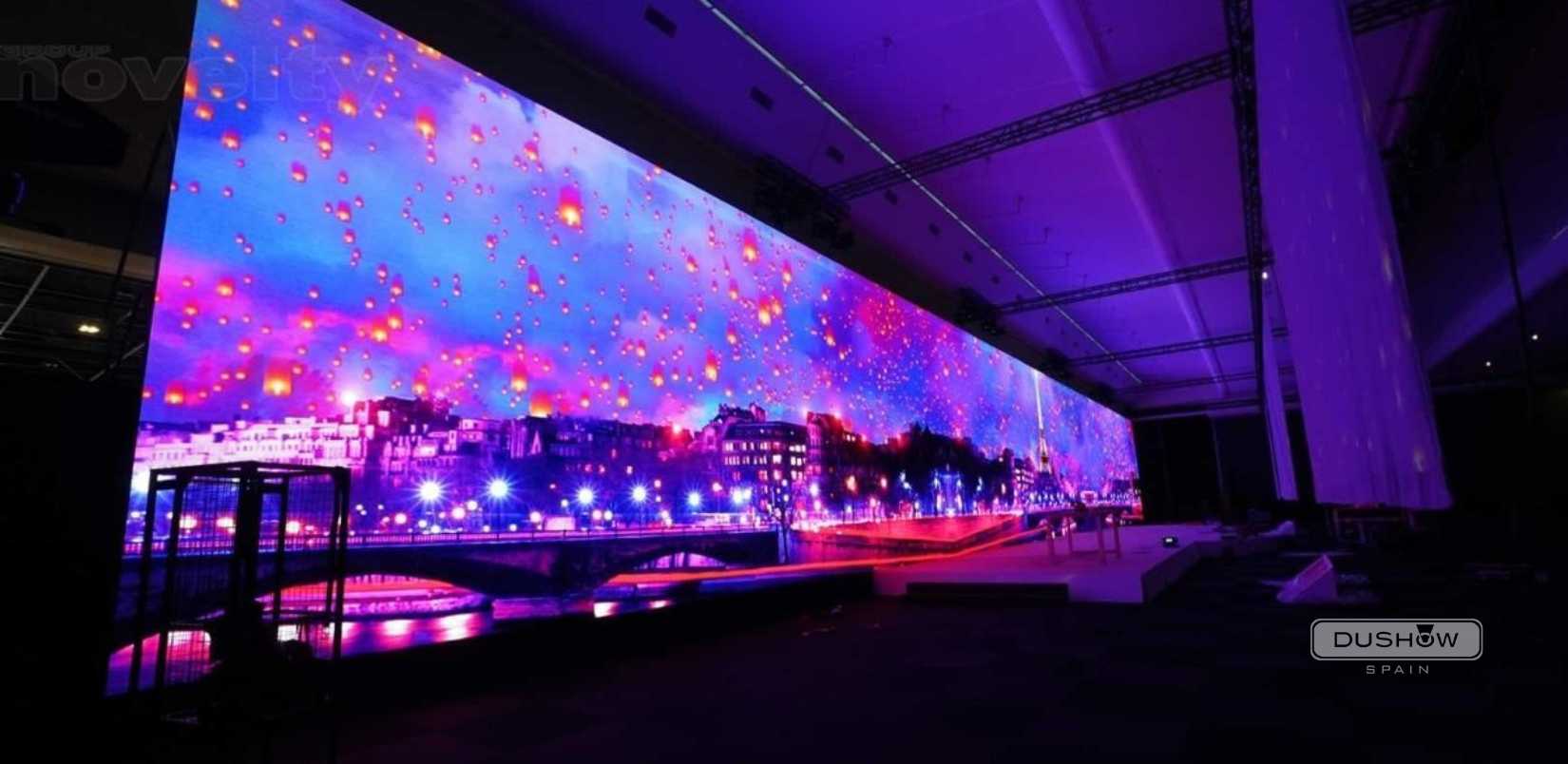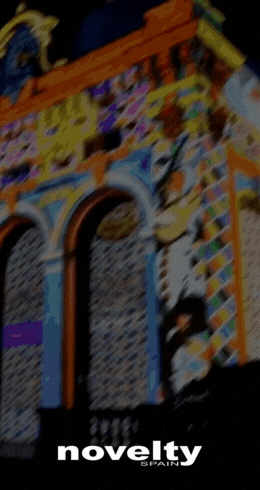Dushow Spain is now Novelty Spain
How to choose the best LED screens for events
When it comes to LED screens for events, follow this rule of thumb: the size of your event is the first factor to consider. Choosing the right LED screens for events will depend in large part on the venue you’ll be dealing with as the organizer.
Using large LED screens for events will enable all of your guests to take part in the audiovisual experience without missing a beat.
This article will tell you all you need to know to impact your audience and choose the best LED screens for events imaginable.
Here is the following video in case you prefer to view the content of this article in audiovisual format:
What is a LED screen?
To begin with, a LED screen is not the same as an LCD or plasma screen. The main characteristic of this type of screens is that they are made up of modules that contain LED lights in their interior. They work like the pixels of a conventional TV.
This way, as many modules as are necessary to create the LED screen of the dimensions you require (or want) can be assembled.
With LED screens for events, you’ll be able to show any kind of content, such as videos of the event itself, presentations, live cam feeds, interviews and institutional or bulletin board messages, etc. All of this is what makes LED screens indispensable audiovisual equipment when organizing an event.
When can you use a LED screens for events?
There are times when a LED screen can be very useful. A few examples follow:
-
There isn’t enough space for the projection
Whenever you plan a front or rear projection, you will need a good amount of obstruction-free space between the projector and the surface to be projected on.
When you don’t have enough space, LED screens for events will be the best alternative.
-
You don’t want to limit your imagination to a flat geometric shape
Since they are made up of combinable segments, the LED screens for events do not have to conform to conventional shapes.
You can use them to create unique shapes like triangles, cylinders, curves or cubes. You can position them at angles to each other, etc.
.jpg?width=1200&height=585&name=HEADER%20BLOG%20(3).jpg)
Make the most of their versatility to simulate walls, ceilings, floors, or anything you like. You can even deploy semi-transparent versions (where the image appears to be floating in the air).
-
You need a silent projection that generates less heat
This technology is ideal for interiors, such as a recording studio, where there is less passive heat dissipation. Ventilation equipment, which can generate noise, is not required.
-
Spaces with a great amount of lighting
When your event is put on with a large amount of lighting or is held in broad daylight, conventional projections do not have enough intensity to achieve a sharp, clear image.
If your event is outdoors, the natural light will be predominant. Only LED screens have enough power for the images of your event to be seen clearly.
Indoors or outdoors?
There are different types of LED screens for events, and certain models are more suited to indoor or outdoor scenarios. The difference is not only in the IP degree, but also luminosity (nits) and resolution (pixel pitch).
- Outdoor: most spectators will be further away from the screen. In this case, you can use lower resolution than with indoor models.
This means that the LEDs (light-emitting diodes) can be bigger, and consequently more powerful (and brighter, too). - Indoor: to the contrary the LED Modules found in this category have higher resolution.
How can LED screens be adapted depending on the celebration?
Every event has its own unique traits. That is why, to choose the most appropriate LED screens for events, at Novelty Spain we follow a simple process (and we recommend you do too!):
- Review the design of the room or venue, the access to premises, lighting, content to be shown and available electrical power.
- Definition of the type of screen; its shape, size and placement.
- Creation of a CAD that shows all of the components used for each specific screen, and in the event rigging is necessary, its accreditation.
- A video flow is designed with the content that will be shown, including the processing of the video signals (for the design of the contents, we generate pixelmaps so the creators understand the shape and size of the pixelspace), as well as the equipment necessary for generation and reproduction (switchers, media servers, signal converters, etc.).
With so many options, choosing LED screens for events is no easy task
The technology for LED screens offers many possibilities for events. That is why our main recommendation is to seek advice from event experts, optimizing your budget and making sure your event brings the biggest possible impact for your audience.
This article was first published in Novelty Spain, you can read the original Spanish version here.






